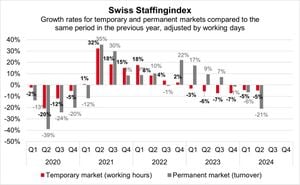The Vietnamese Ministry of Home Affairs is embarking on significant reforms aimed at merging several administrative units at the district and commune levels, all set against the backdrop of ever-increasing demands for efficiency and resource management. The initiative, which is building momentum, is forecasted to radically transform local governance just as Vietnam approaches 2025.
Recently, Deputy Minister Cao Huy took steps on behalf of the Minister to formalize the plans. The driving force behind this initiative is the recent National Assembly resolution entitled 35/2023. Under this directive, municipalities are required to actively reassess their administrative configurations to avoid inefficiencies and financial wastage.
"It is necessary to be proactive in proposing the adjustment of administrative units at the district and commune levels to meet the new requirements and to effectively serve the organization of local governments for the upcoming 2025 elections," stated Cao Huy, highlighting the importance of aligning government operations with administrative reality (reported by PLO). This is not merely about restructuring; rather, it embodies the broader medium-term goals of enhancing service delivery and operational efficiency within Vietnam's administrative framework.
At the heart of the reforms lies the Ministry's commitment to stringent financial discipline. The program is not just about merging local units but also about tightening controls over public spending as the government sets its sight on reducing costs. This includes focusing on effective management and utilization of public property, particularly land and buildings, to root out inefficiencies.
The blueprint for moving forward includes guiding approximately 51 provinces to streamline their administrative management as per the guideline timelines from 2023 through 2025. Specifically, the Ministry aims to consolidate communes and administrative layers where populations are insufficient per regional criteria dictated by the national resolutions.
"We are determined to streamline the structure and reduce the number of administrative staff to create efficiency and save resources," affirmed Cao Huy, reiterative of the rigorous approach the Ministry intends to enforce (reported by TCDN). More than just organizational rearrangements, these reforms will necessitate significant cuts to government personnel. The Ministry aims to see reductions of 5% for civil servants and 10% for public employees by 2026, realigning the workforce with new operational realities.
This strategy of reshaping the administrative apparatus arrives amid considerable intent to leverage every savings made through these initiatives back to public development projects and social welfare programs. Part of this commitment reflects a duty to uphold taxpayer resources with utmost respect.
Not only will local administrations need to adhere to budgetary forecasts provided, but there will also be concerted efforts to reassess and effectively allocate funds earmarked for infrastructure and community service improvements. The overarching objective is not to merely lay off the ineffective but to efficiently organize human resources such as civil servants to best fulfill Vietnam's developmental aspirations.
Integrate these changes and enforce compliance within the public sector, experts argue, are fundamental to achieving greater stability and predictability within governance. With a projected growth average and population demand fluctuations, the timing could not be more pressing.
Throughout the course of this detailed planning and execution phase, authorities will engage not only with the operational aspects of the changes but also embrace accountability through heightened scrutiny of management practices. This is encapsulated by the recommended recommendations for stronger oversight on government financial activities, particularly those vulnerable to waste and mismanagement.
These notable initiatives show Vietnam's active approach to governance reforms as it seeks to address the multiplicity of challenges faced by its administrative systems. By 2025, achieving these ambitious restructuring goals could lay the groundwork for even more radical transformations aimed at optimizing public service quality and accountability.
With every step taken to merge and streamline, the motivation remains not only practical but also deeply rooted in the shared aim of delivering promising outcomes for Vietnamese society at large. Indeed, common aspirations around effective governance continue to motivate action among the nation's leaders as they resolve to usher Vietnam's public administration structure toward greater efficiency and sustainability.



